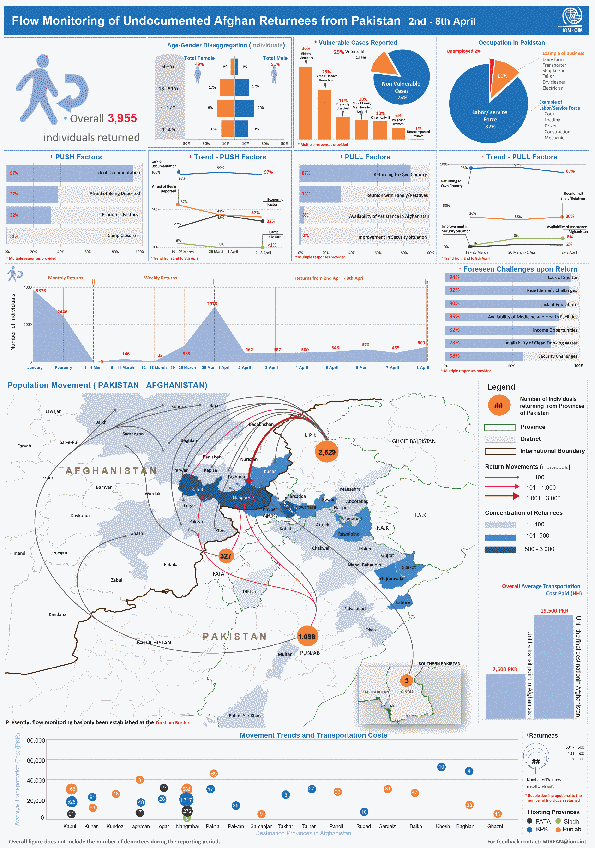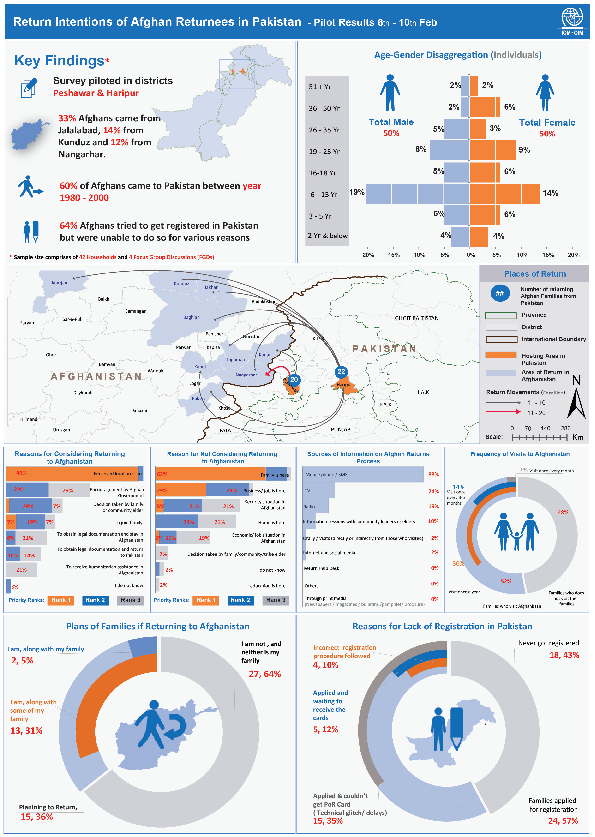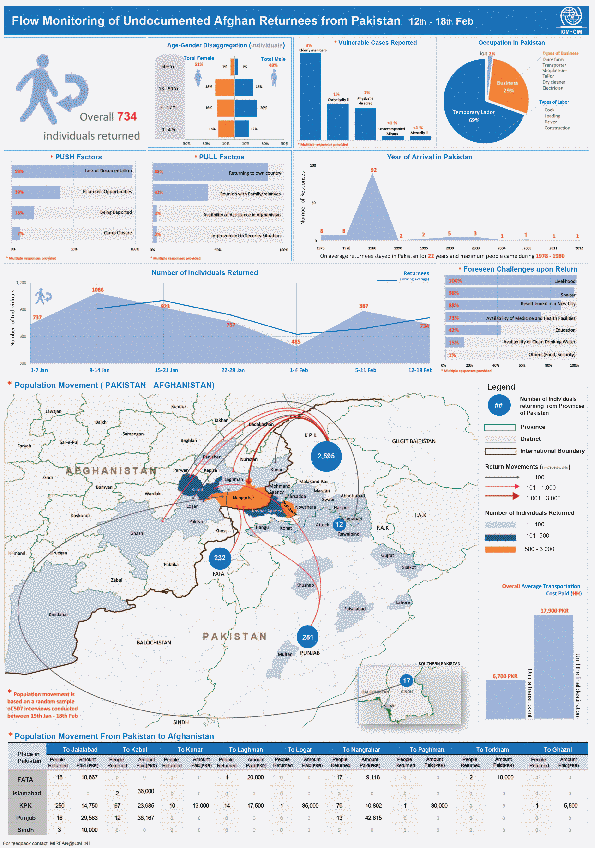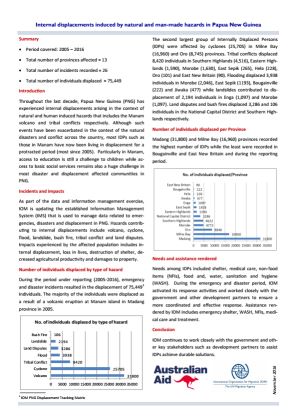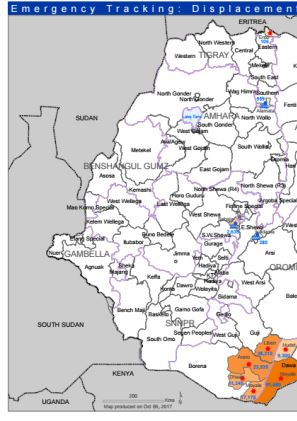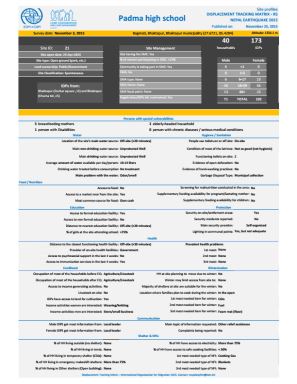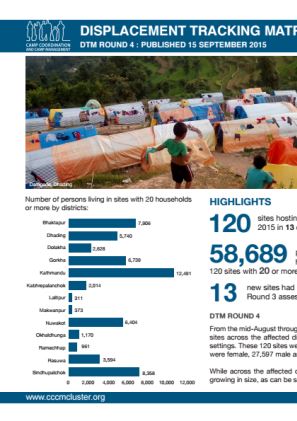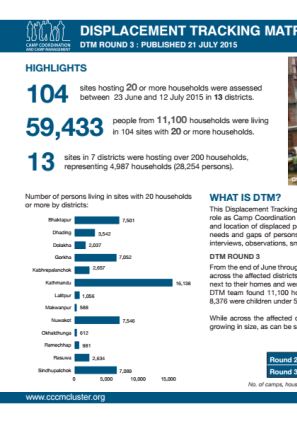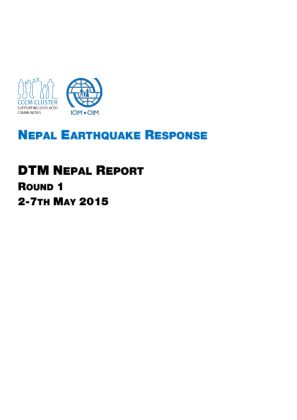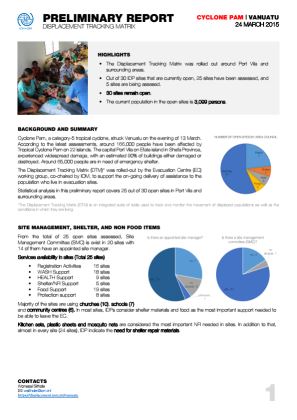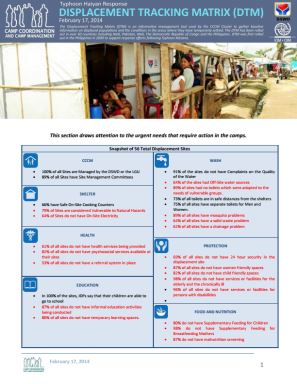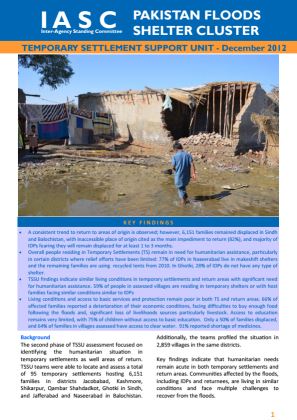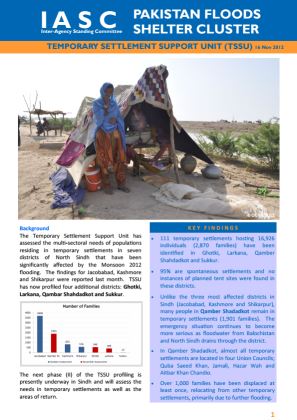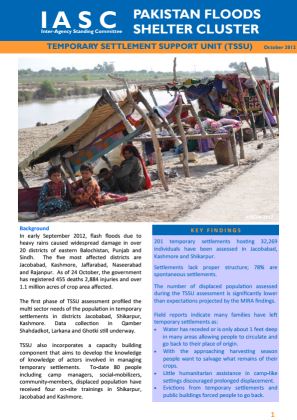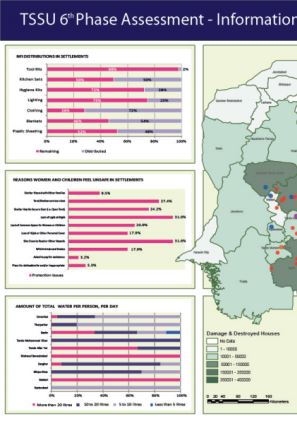-
Countries
-
Data and Analysis
-
Special Focus
-
Crisis Responses
Asia and the Pacific
DTM Asia and the Pacific
DTM Operations in the region
- Active DTM operation
- Past DTM operation
Pakistan — Flow Monitoring of Undocumented Afghan Returnees from Pakistan (2—8 April 2017)
IOM Pakistan’s Weekly Situation Report on the Return of Undocumented Afghans through the Torkham border, reporting period [2nd - 8th April 2017].
Pakistan — Flow Monitoring of Undocumented Afghan Returnees from Pakistan (19—25 March 2017)
During the week of 19th – 25th March 2017, a total of 869 (143 families) undocumented Afghans returned from Pakistan through the Torkham border. Movement trends for the reporting period indicate: Of the total, 62%
Pakistan — Flow Monitoring of Undocumented Afghan Returnees from Pakistan (26 March —1 April 2017)
IOM Pakistan’s Weekly Situation Report on the Returns of Undocumented Afghans through the Torkham border, reporting period [26th March - 1st April 2017].
Return Intentions of Afghan Returnees in Pakistan (6—10 February 2017)
The surveys informing this report were carried out in two districts of Khyber Pakhtunkhwa (KP), namely Peshawar and Haripur, during the 6th and 10th of February 2017. A total of 279 individuals in 42 families were surveyed. Four Focus Group Discussions were also carried out in both districts.
Pakistan — Flow Monitoring of Undocumented Afghan Returnees from Pakistan (12—18 February 2017)
During the week of 12-18 February 2017, a total of 734 (154 families) undocumented Afghans returned from Pakistan through the Torkham border.
Aceh Earthquake - Site Profiles 1 (15 December 2016)
Selepas gempa bumi yang berlaku pada 7 Desember 2016, dokumen ini akan memberikan ikhtisar mengenai semua profil situs yang berjumlah 111.
Papua New Guinea — Internal Displacement Overview (November 2016)
Throughout the last decade, Papua New Guinea (PNG) has experienced internal displacements arising in the context of natural and human induced hazards that includes the Manam volcano and tribal conflicts respectively.
Pakistan — Migration Flows from Afghanistan and Pakistan to Europe Desk Review Report (August 2017)
This desk review report is the output of the first phase of IOM’s project implementation on data collection to enable a better understanding of migration flows from Afghanistan and Pakistan towards Europe.
Nepal — Earthquake Displacement Report 6 (22 February — 6 March 2016)
From 22nd February to 6th March 2016, the DTM team identified and visited 107 potential displacement sites across the affected districts.
Afghanistan — Return of Undocumented Afghans from Pakistan and Iran (2015) Overview
Between January and December 2015, a total of 663,295 Afghans spontaneously returned and were deported through Torkham, Islam Qala, Milak and Spin Boldak borders. Compared with the same period in 2014, spontaneous returns through the four borders have increased by 31% (416,457 vs.
Nepal — Earthquake Displacement Report 5 (15 September — 20 November 2015)
From mid-September through to 20 November 2015, the DTM team identified and visited 140 potential displacement sites across the affected districts.
Nepal — Earthquake Displacement Site Profiles 5 (15 September — 20 November 2015)
This document contains site profiles for 100 displacement sites identified in Round 5 DTM assessments.
Nepal — Earthquake District Profiles 5 (15 September — 20 November 2015)
This document contains 12 district profiles and one national overview from Round 5 DTM assessments.
Nepal — Earthquake Displacement Report 4 (15 August — 5 September 2015)
147 potential displacement sites across the affected districts were identified in Round 4 assessments. Of these, 120 were active and hosting 20 households or more in camp-like settings. These 120 sites were hosting an estimated 11,703 households (58,689 people).
Nepal — Earthquake Displacement Report 3 (30 June — 12 July 2015)
286 potential displacement sites across the affected districts were identified in Round 3 assessments. Of these, 107 were closed, 75 were hosting fewer than 20 households or dispersed next to their homes and were therefore not included in the assessments.
Nepal — Earthquake Displacement Report 2 (30 April — 8 June 2015)
Round 2 assessments identified 409 displacement sites in fifteen earthquake-affected districts, hosting an estimated 117,700 people from 21,711 households. 77 priority sites of more than 50 households are hosting 49,118 people.
Nepal — Earthquake Displacement Report 1 (2—7 May 2015)
Round 1 assessments identified 5,783 IDPs in 53 sites in Kathmandu, Bhaktapur and Lalitpur districts. Sites are 98% spontaneous settlements and 2% collective centres.
Vanuatu — Cyclone Pam Preliminary Displacement Report (24 March 2015)
Around 65,000 people are in need of emergency shelter. The Displacement Tracking Matrix was rolled out around Port Vila and surrounding areas. Out of 30 IDP sites that are currently open, 25 sites have been assessed, and 5 sites are being assessed. 30 sites remain open.
Philippines — Typhoon Haiyan Displacement Report (May 2014)
According to the Government of the Philippine’s Disaster Response Operations Monitoring and Information Center (DROMIC), some 4 million people were internally displaced from their homes due to the Typhoon Haiyan (local name Yolanda) disaster- over a quarter of the entire affected population of 14
Philippines — Typhoon Haiyan Displacement Report (17 February 2014)
There are a total of 56 displacement sites covered by this report which is an increase of 9 % from the previous report. This is due to a 100 percent increase in transitional sites which increased from 15 to 30 sites; thus comprising 53% of all displacement sites.
Pakistan — Floods 2012 TSSU Report (December 2012)
A consistent trend to return to areas of origin is observed; however, 6,151 families remained displaced in Sindh and Balochistan, with inaccessible place of origin cited as the main impediment to return (82%), and majority of IDPs fearing they will remain displaced for at least 1 to 3 months.
Pakistan — Floods 2012 TSSU Report (November 2012)
111 temporary settlements hosting 16,926 individuals (2,870 families) have been identified in Ghotki, Larkana, Qamber Shahdadkot and Sukkur. 95% are spontaneous settlements and no instances of planned tent sites were found in these districts.
Pakistan — Floods 2012 TSSU Report (October 2012)
201 temporary settlements hosting 32,269 individuals have been assessed in Jacobabad, Kashmore and Shikarpur. Settlements lack proper structure; 78% are spontaneous settlements.
Pakistan — Floods 2012 TSSU Dashboard 6 (8 March 2012)
This dashboard displays information as of 8 March 2012 by cluster consisting of a map and data represented in graphs.
Pagination
Pagination
- First page
- Previous page
- 1
- 2
- 3
- 4
- 5
- 6
Pagination
- First page
- Previous page
- 1
- 2
- 3
- 4
- 5
- 6
- 7
